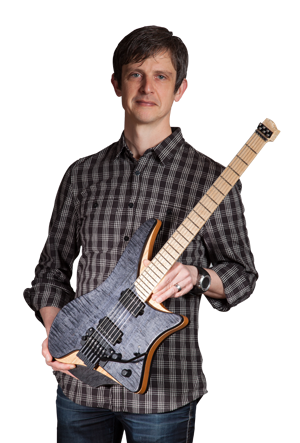Attention all .strandberg* guitar or hardware owners: Some batches of hardware have had an issue that will lead to breaking strings (generally, the 1st string) in gauges .009″ – .010″. The root cause has been determined to be a combination of the size of the set screw and the head of the Pozidriv wood screw seen in the picture. The fix is to simply unscrew the set screw, remove the string, drop our newly developed small plate inside, and replace the string and set screw. It has been tested successfully on a variety of guitars and has worked in 100% of the cases. If you are suffering from this issue, please get in touch and we will send you the plate free of...
Learn MoreThings are moving quickly here at Strandberg Guitarworks. As a result, Facebook and the new website strandbergguitars.com have received more attention than this site, and to avoid duplication, here are a few pointers to pertinent recent posts. Click on the images to view pictures at the strandbergguitars.com website. #14 The new #15 #26 #31...
Learn MoreHere are a few pictures of the final guitar stand. There was no good-looking plywood to be had in town, so I had to settle for this material which is called “OSB” or Oriented Strand Board. It’s cheap, durable, and I would imagine is kind of ecologically sound since it’s made from waste wood. Having said that, it might well contain awful glue compounds or have been shipped from across the globe… The weight turned out to be 490 grams (a little over 1 lb) which is well below most, and they are easy to pack. I did make a few spare ones for the .strandberg* owners that I will meet at NAMM. Future orders will also have the option of including a stand and those of you that own a .strandberg* but don’t have a stand can purchase...
Learn More#13 is the second build that includes a piezo loaded bridge. #9 was the first, but the time from completion to delivery was so short that I had little time to play around with them. This time, I have tried them through a couple of different amps and am very impressed. Here are a few pictures of the work that goes into installing them – it is fairly manual labor since having custom saddles manufactured becomes reasonably priced only when the quantity is very high. I start with GraphTech piezo equipped saddles for Wilkinson tremolos and saw off just the front portion. I then put them up in the milling machine and mill them down to the correct thickness. The next step is to shape them roughly. I usually do this on a Dremel with a disc grinder. I make sure the fit into the custom bridge/tuner housings. These have been modified from the original by having a slot where the saddle would normally sit, and a hole for the wire to go through. Next, after some final finishing work, is installing them into the guitar. I now rout a gradually deeper channel under the bridges themselves. Each cable is hidden under the next bridge, ensuring there is some...
Learn MorePictures of the builds completed lately have been added to the gallery. This includes #10 (Alejandro Cabral), #11 (John Mason), #12 (Shun Nagai) and #15 (Misha Mansoor). It has been a great pleasure completing all of these distinctly different builds, ranging from an elaborately constructed 6-string via 7-strings fanned fret and tremolo to 8-string baritone...
Learn MoreWhen Tosin Abasi received #8, he was astounded at the possibilities of the baritone hybrid concept, which has led to several new compositions in a tuning of C#AEADGBE. For existing song material, he tunes it DGEADGBE and places a capo on the 0-fret for an effective tuning of EAEADGBE. To overcome this, we created #17, which is similar in specs but a regular 28″-26.5″ mixed...
Learn More


